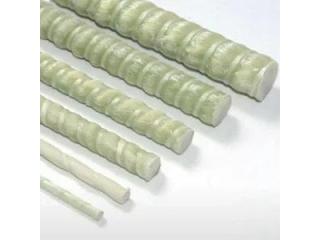Elevate Your Cooking...
Everything Else
Glass fiber reinforced plastic (GFRP) is a kind of fiber reinforced composite material (Fi-berReinforcedPolymer referred to as FRP). Fiber reinforced composite material is a material formed by high-performance fiber, synthetic resin matrix and curing agent using appropriate molding process; high-performance fiber is the reinforcing material and synthetic resin is the matrix material. Fiber has high tensile strength and is the main provider of strength of fiber reinforced composite materials. It mainly bears loads and is mainly divided into carbon fiber, aramid fiber, basalt fiber, glass fiber, etc. The matrix material has the function of bonding and transmitting shear force, and its physical properties can affect the physical properties of fiber reinforced materials.
Appearance: The shape of GFRP bar should be threaded, the surface texture of the threaded rod should be uniform, without bubbles and cracks, and the thread tooth shape and pitch should be neat and should not be damaged.
Resin matrix: It is recommended to use vinyl resin and epoxy resin or a mixed resin of vinyl resin and epoxy resin for the resin matrix. When using unsaturated resin (o-phthalic resin, isophthalic resin) to produce glass fiber reinforcement, due to the erosion of the alkaline environment, the mechanical properties will deteriorate significantly. For example, if placed in alkaline liquid for about a month, the tensile strength may drop by more than 30%. Pay attention to this problem during construction.
Density: The density of GFRP reinforcement material should be between 1.9 g/cm3 and 2.2 g/cm3.
Specifications: The nominal diameter range should be 10 mm to 36 mm. The recommended nominal diameter specifications of commonly used GFRP reinforcements are 20 mm, 22 mm, 25 mm, 28 mm and 32 mm. The overall dimensions, allowable deviations and straightness of GFRP reinforcements should meet the requirements of the following table.
Characteristics of glass fiber reinforcement:
① High load-bearing capacity, strong tensile strength, the rod strength is twice that of threaded steel bars of the same diameter, but the mass is only 1/4 of that of steel bars;
② Stable elastic modulus, about 1/3 to 2/5 of that of steel bars;
③ Electrical insulation, thermal expansion coefficient is closer to cement than steel bars;
④ Good corrosion resistance, suitable for use in humid or other corrosive environments such as water conservancy, bridges, docks and tunnels;
⑤ Low shear strength, ordinary shear strength is only 50 to 60 MPa, with excellent cutting performance.
Scope of application
Due to the characteristics of glass fiber reinforcement, it is widely used in subway underground continuous walls, road and railway foundation protection, building protection and other fields.
For more information, please visit our website.











